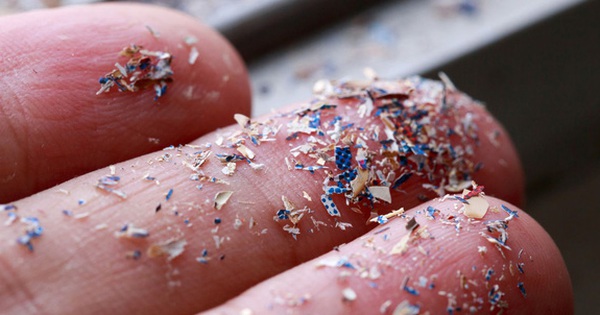The eating habit “destroys” collagen, making the skin easy to wrinkle and sag
The older women get, the more health problems women face as well as the decline in beauty, all of which are related to the loss of collagen.
Collagen is a fibrous protein that makes up about 30% of the protein in the body, making up 70% of the skin structure. The collagen fibers are long and thin, intertwined, creating a collagen network. The collagen network is the foundation of the skin. Collagen has the role of connecting skin cells, stimulating the metabolism of skin cells, creating elasticity, firming the skin, healing wounds. Therefore, collagen is the main ingredient that keeps the skin firm, smooth, and is a decisive factor in the beauty of the skin. In the skin, collagen is most concentrated in the dermis.
When collagen is deficient due to degeneration over time, the collagen fibers underneath the skin decline in both quantity and quality, the skin will face an unstoppable decline. Because at this time, the skeleton of the skin is weakened, the resistance is poor, wrinkles begin to appear, the skin becomes loose, heavier, wrinkles and sagging. At the same time, lack of collagen also affects bone health.
As a woman ages, the amount of collagen in her body decreases. This percentage will increase as women enter their 30s, 40s and beyond.
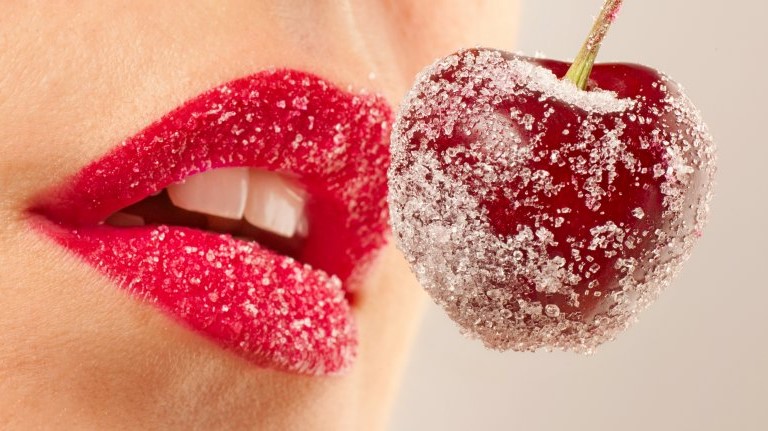
Sugar is the “enemy” of health in general and skin in particular. Illustration
According to doctors, there are countless habits that destroy collagen and consuming foods high in sugar is one of them. Eating a lot of sweets will make you age faster no matter how hard you take care of your skin. Research has shown that a diet high in sugar can reduce your collagen levels 10 times more than usual. That’s because excess sugar in the body can combine with proteins, causing a glycation reaction, wreaking havoc on the quality of collagen in the body. At this time, the skin gradually becomes less elastic, darkened and wrinkles appear.
One of the simplest ways to help restore collagen in the body is to increase the use of foods that help produce natural collagen, which are:
Bone broth
Created by boiling animal bones in water, the process is said to be collagen extraction. Since bone broth is made of bones and connective tissue, it contains calcium, magnesium, phosphorus, collagen, glucosamine, chondroitin, amino acids, and many other nutrients.
However, each type of bone broth is different because of the quality of the bone used along with the other ingredients. Therefore, to ensure the quality of the broth, make your own with bones from a reputable meat source.
Chicken meat
Like beef and fish, chicken has all the animo acids needed to create collagen. Collagen is most abundant in the chicken skin, wings, cartilage and legs. Several studies have used chicken neck and cartilage as a source of collagen to treat arthritis.
Bell pepper
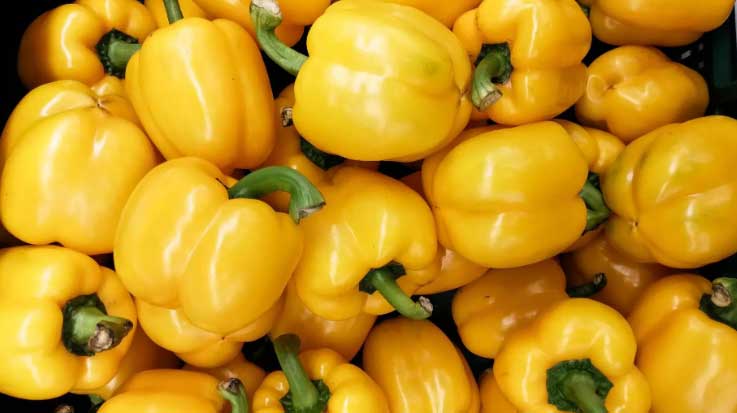
Not only are they high in vitamin C, which stimulates collagen production, but bell peppers also contain powerful antioxidants called carotenoids. Carotenoids contain anti-inflammatory properties that protect your skin from the sun.
Papaya
Papaya is a fruit that has the ability to increase the elasticity of the skin while minimizing wrinkles thanks to its rich in antioxidants, vitamins and minerals… Not only that, vitamins such as A, K, E … also very beneficial to health, increasing resistance to repel diseases.
Fish and shellfish
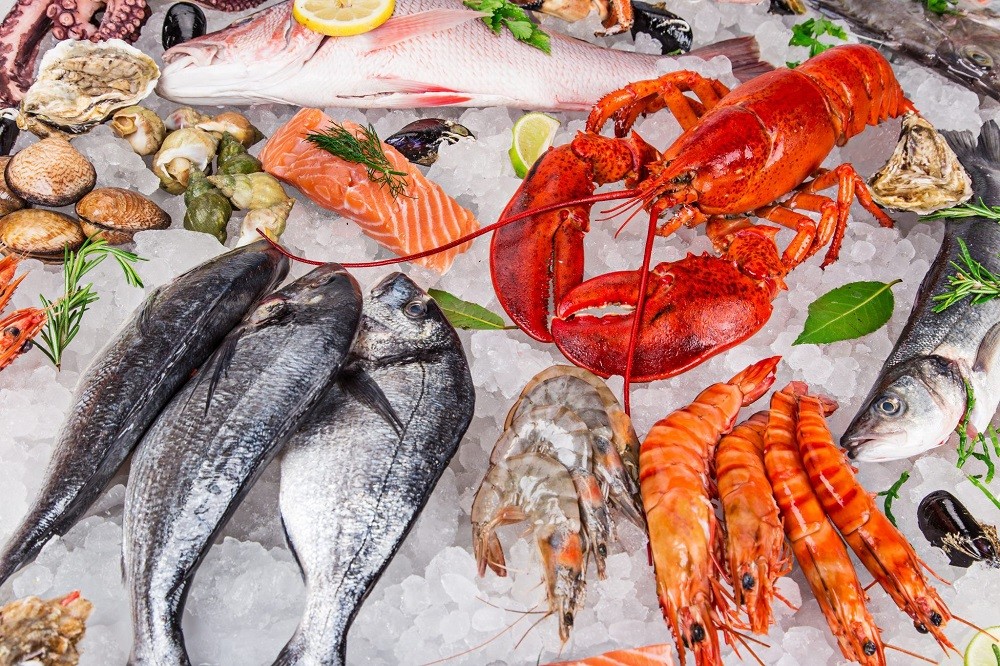
Like other animals, fish and shellfish have bones and ligaments made of collagen. Some even claim that seafood-based collagen is one of the easiest to absorb. However, be aware that fish meat contains less collagen than other parts. The parts of the fish that are rich in collagen are the head, scales, or eyeballs. In practice people have used fish skin as a source of collagen peptides.
Egg-white
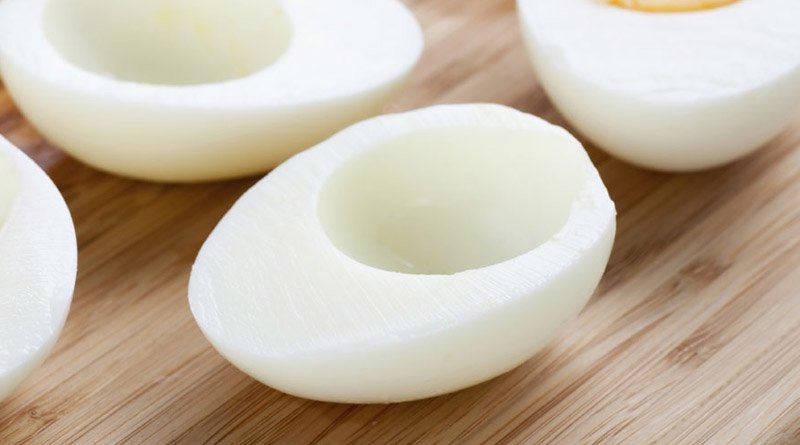
This is an inexpensive but effective collagen booster. Egg whites are a great source of proline, one of the amino acids needed for collagen production.
Citrus fruit
Vitamin C plays a key role in the production of a reliable source of pro-collagen, the body’s precursor to collagen. Therefore, getting enough vitamin C is very important.
Citrus fruits like oranges, grapefruits and lemons are rich in vitamin C, so try a grapefruit for breakfast, or add citrus slices to your salad.
In addition, on the list of fruits rich in vitamin C are tropical fruits such as mango, kiwi, pineapple and guava. Guava also boasts a small amount of zinc, another element for collagen production.
Kinds of bean
Beans are protein-rich foods that typically contain amino acids needed for collagen synthesis. Plus, many of them are rich in copper, a nutrient essential for collagen production.
Besides adjusting the diet, to increase the amount of collagen in the body, you should do the following habits:
-Facial massage: This is a simple but effective way. Every day you do facial massage for about 10-15 minutes can stimulate collagen production and increase blood circulation,
– Use skin moisturizers: You can apply natural masks at home such as aloe vera, honey and egg yolk masks to keep the skin clean, firm and soft. .
-Protect skin from UV rays: When going out, you should use a wide-brimmed hat, sunglasses, mask, sunscreen to protect your skin, use sunscreen even when it’s not sunny.
Increase movement: Exercise facilitates blood circulation more, deeper, making the skin radiant and even. Regular exercise will help slow down the aging process because it promotes collagen production.
at Blogtuan.info – Source: Afamily.vn – Read the original article here


